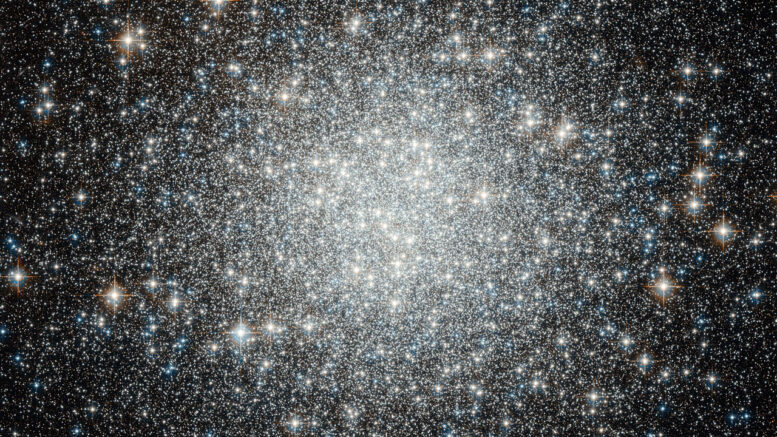Messier 53 (M53) is a globular star cluster located in the northern constellation Coma Berenices. Messier 53 is relatively easy to find as it lies in the same area of the sky as Arcturus, the fourth brightest star in the sky. Arcturus can be easily found by following the line formed by the three bright stars of the Big Dipper‘s handle. Arcturus is the first bright star that appears along the imaginary line.
| Description | |
| Visible From Pacific Northwest | January To May |
| Best Time To Observe | March, April and May |
| Minimum Size Of Viewing Device | Small Telescope |
| Object Type | Globular Cluster |
| Designations | Messier 53, M53, NGC 5024, GCl 22, C 1310+184, MWSC 2094 |
| Right Ascension | 13h 12m 55.25s |
| Declination | +18°10’05.4” |
| Constellation | Coma Berenices |
| Number Of Stars | More Than 500,000 |
| Apparent magnitude | +8.33 |
| Apparent dimensions | 13′ |
| Object Radius | 110 light years |
| Distance From Earth | 58,000 light years |
History
Charles Messier discovered the cluster independently on February 26, 1777.
William Herschel observed the cluster with a larger telescope and was the first to resolve it into individual stars. He found the cluster similar in appearance to Messier 10. Herschel noted:
A cluster of very close stars; one of the most beautiful objects I remember to have seen in the heavens. The cluster appears under the form of a solid ball, consisting of small stars, quite compressed into one blaze of light, with a great number of loose ones surrounding it, and distinctly visible in the general mass.
William Herschel
John Herschel observed the cluster on May 6, 1826 and described it as a “most beautiful highly compressed cluster. Stars very small, 12 to 20m; with scattered stars to a considerable distance; irregularly round, but not globular. Comes up to a blaze in the center; indicating a round mass of pretty equable density.”
Locating M53 In The Sky
Messier 53 is relatively easy to find as it lies in the same area of the sky as Arcturus, the fourth brightest star in the sky. Arcturus can be easily found by following the line formed by the three bright stars of the Big Dipper‘s handle. Arcturus is the first bright star that appears along the imaginary line.
Messier 53 can be found 15 degrees west of the orange giant. Located in the eastern part of Coma Berenices, M53 is positioned just a degree to the northeast of Diadem, Alpha Comae Berenices, an optical double star with a visual magnitude of 4.32.

Viewing M53
Small telescopes reveal a hazy patch, slightly oval in shape, with a large bright core, while larger instruments resolve the cluster’s outer regions into stars. At least a medium-sized telescope is required to resolve the stars and significantly larger ones to see the full diameter of the cluster’s outer halo. The best time of year to observe M53 is in the months of March, April and May.
Photographing M53
Just as any open cluster, imaging Messier 53 will require accurate autoguiding to maintain crispness of the stars. It is indeed possible to utilize as little as about 1 to 2 hours of exposures to obtain these photos and a great shot!
https://www.theastrogeek.com/dark_sky_journal/2014/4/24/m53
Sources And Further Reading
Descriptions of all of Messier Objects can be found here.
https://www.nasa.gov/feature/goddard/2017/messier-53
https://freestarcharts.com/messier-53

Be the first to comment on "Messier 53"